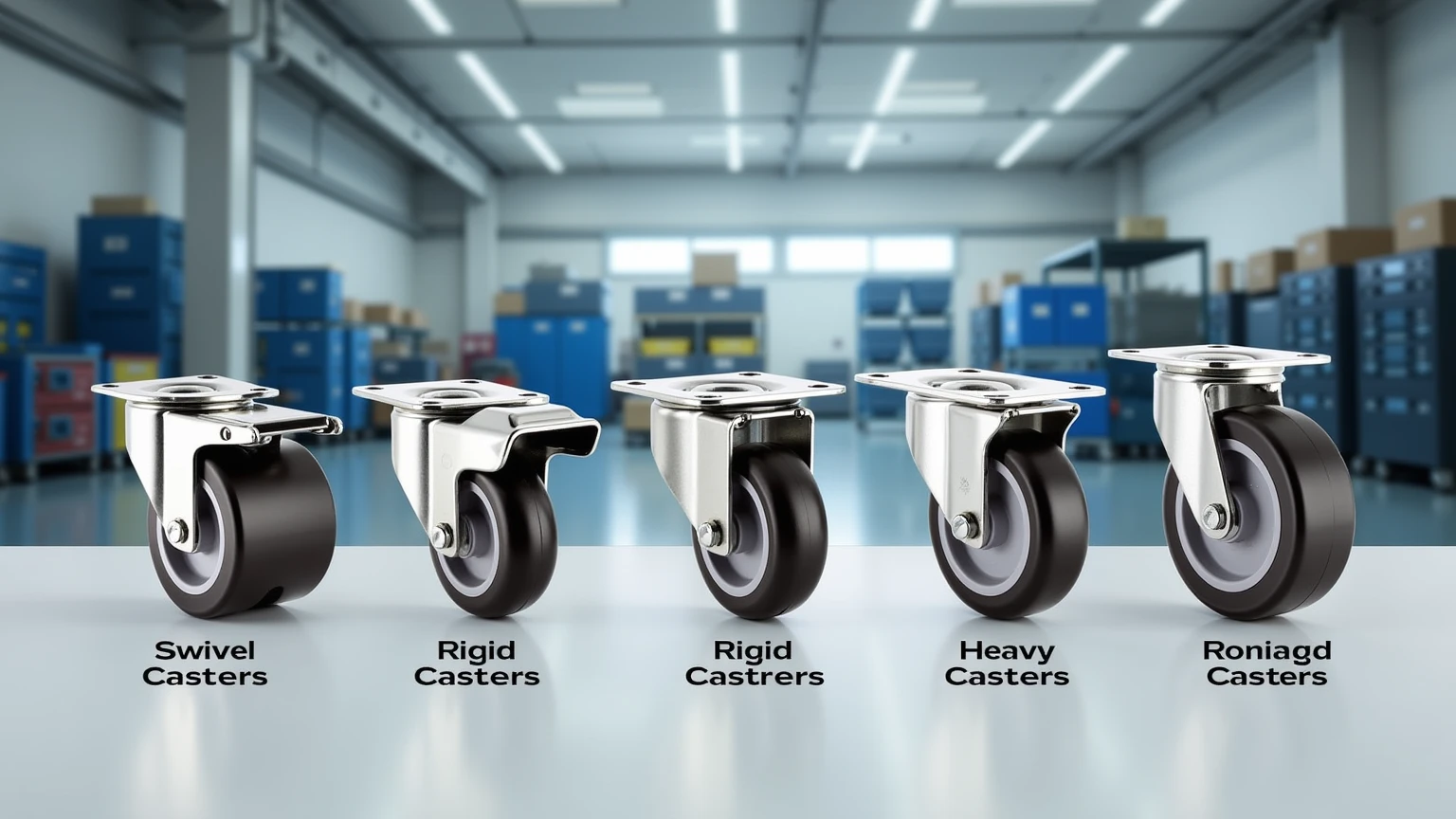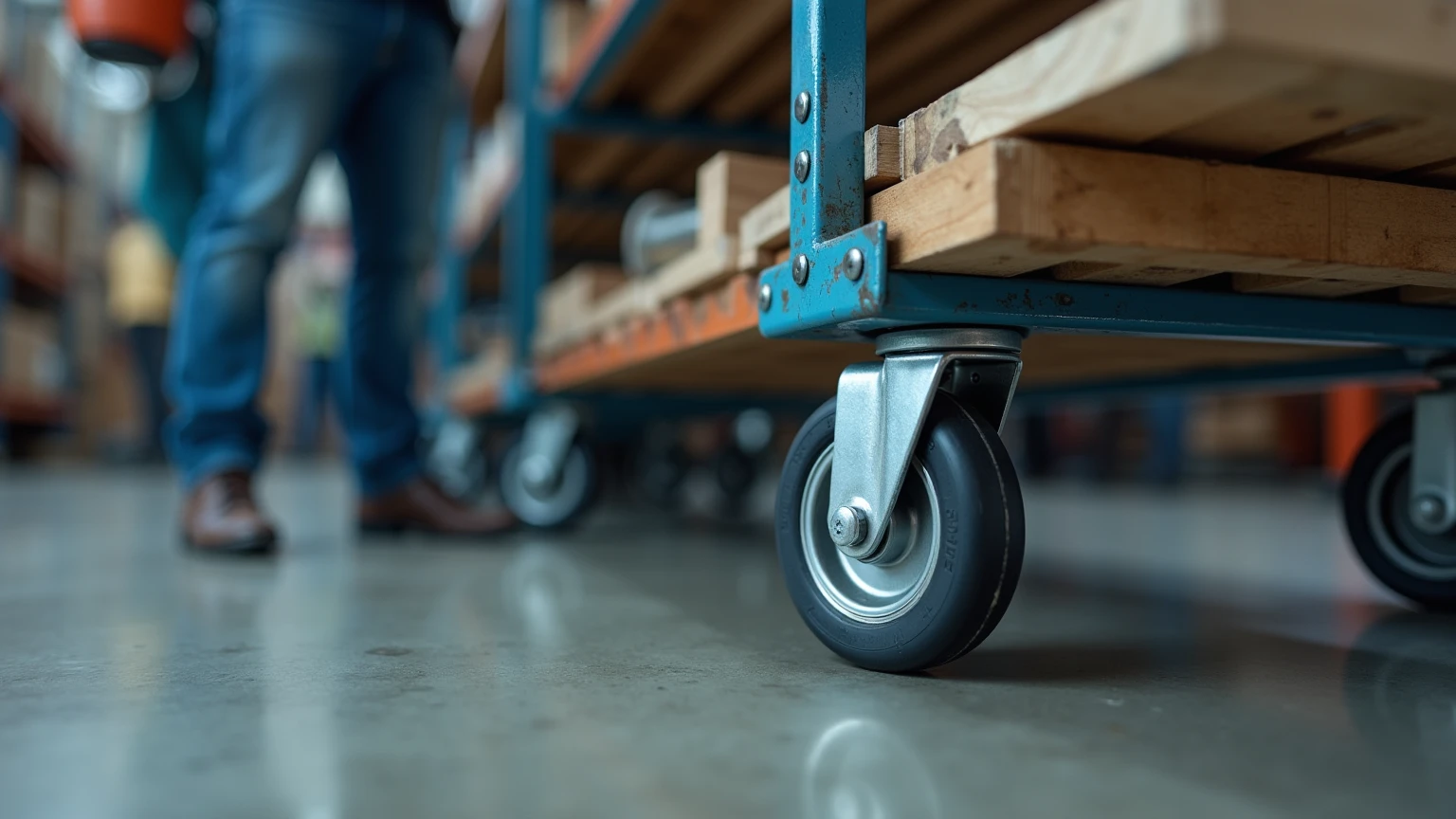Caster wheels are a critical component of many modern applications, found in a variety of settings from industrial environments to everyday household items. Understanding caster wheels not only helps in making informed purchasing decisions but also enhances the efficiency and safety of equipment in use. In this blog post, we'll delve deep into what caster wheels are, their types, applications, and key factors to consider when selecting them.
A caster wheel is an undriven wheel designed to be attached to the bottom of larger objects, commonly referred to as vehicles (think shopping carts, office chairs, carts in your garage, and more). Their function is straightforward: they enable easy movement and maneuverability of these objects, allowing them to glide smoothly over surfaces.
Caster wheels have become indispensable in various applications, primarily because they transform heavy, cumbersome items into easily maneuverable equipment. For instance, in industrial settings, high-capacity casters contribute significantly to material handling efficiency, while in healthcare facilities, they allow for the swift and safe transport of medical equipment. Furthermore, in domestic environments, they facilitate the rearrangement of furniture and other objects without straining the muscles.
A standard caster consists of a wheel and a bracket (also known as a fork). The wheel is designed to spin freely, allowing for movement in horizontal and vertical directions, while the bracket attaches to the vehicle. There are also components such as bearings and pivot points which contribute to the smooth operation of the wheel.

Casting wheels come in several types, each designed for specific functions and environments.
Rigid (or fixed) casters are mounted in a stationary manner, allowing them only to roll forward and backward. They are ideal for applications where straight-line movement is essential. For instance, they are often used on shelves and staging platforms.
Swivel casters allow the wheel to rotate 360 degrees around a vertical axis, thus enabling the vehicle to change direction easily while moving. This type is commonly used in shopping carts and hospital beds, as it grants much-needed mobility in tight spaces.
Designed to handle heavy loads, industrial casters come in both rigid and swivel options and can support weights ranging up to 30,000 pounds. These casters are a vital aspect of factories, warehouses, and heavy material handling.
Specialty casters include a variety of specific designs tailored for unique applications, such as those designed for clean rooms, high-temperature environments, or even noise-reduction requirements.

Caster wheels find applications in diverse settings, each with unique requirements.
In industrial environments, caster wheels are essential for moving equipment, workstations, and inventory. The right casters can enhance productivity by enabling seamless movement and reducing strain on workers.
From office chairs to mobile workstations, casters in home and office settings allow for flexibility and quick rearrangement. Selecting the right wheels for your furniture can prevent floor damage and promote easy mobility.
In healthcare, specialized casters are employed to facilitate the movement of hospital beds, medical carts, and diagnostic equipment. Their design ensures smooth movement and durability, essential for patient safety and equipment reliability.
Selecting the right caster wheels requires an understanding of several key factors.
The load capacity of a caster is critical—choosing wheels that can’t support the weight of the equipment can lead to failures and accidents. Always refer to the manufacturer's guidelines to ensure the appropriate capacity is selected.
The material of the wheel plays a significant role in its performance. Common materials include rubber, polyurethane, nylon, and metal. Each material has its strengths, such as shock absorption, floor protection, or resilience to extreme temperatures.
Consider the environment where the casters will operate. Will they be on smooth concrete, uneven ground, or a carpeted surface? Ensure that the wheel type selected is compatible with these factors, as each surface requires different wheel materials to ensure optimal performance.
A notable issue associated with casters is "caster flutter," which is a rapid oscillation of the wheel that can occur under certain conditions. This can lead to safety hazards if not addressed.
Proper maintenance can extend the life of caster wheels significantly. Regular cleaning, lubrication, and inspection can help in identifying issues before they lead to failure. Additionally, ensuring that the wheels are correctly installed and not overloaded is vital for mitigating wear and tear.
The main types of caster wheels include rigid casters, swivel casters, industrial casters, and specialty casters. Each caters to specific needs based on mobility and load requirements.
Start by evaluating the total weight of the item you need to move. Add a safety margin based on your specific use case, and select casters that can handle at least that total.
Yes, replacing furniture legs with casters is a common practice. Ensure that the casters you select are compatible in size and designed to handle the load of your furniture.
The best materials depend on the environment. For example, rubber wheels are great for soft surfaces while polyurethane wheels are excellent for heavy-duty industrial use.
Regularly inspect the casters for wear, clean them to prevent debris buildup, and lubricate moving parts to ensure smooth operation.
Understanding the significance of caster wheels and their vast range of types ensures that you can make informed decisions tailored specifically to your needs. By considering the factors mentioned, you can enhance efficiency and safety across different settings. Whether you're upgrading office chairs or planning an industrial workflow, the right casters make a world of difference!